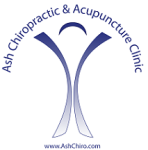FAQS
Chiropractic FAQ
|
Q:
|
What is Chiropractic? |
|
A:
|
Chiropractic locates and removes a severe form of spine and nerve stress, a condition that puts pressure on nerves, unbalances your body, lowers your resistance to disease and weakens you: the vertebral subluxation complex. |
|
Q:
|
What does a Chiropractor do? |
|
A:
|
The doctor of chiropractic analyzes your body for vertebral subluxation using his/her hands and other analysis tools, and then corrects or removes any spinal nerve stress using various spinal adjustment techniques. |
|
Q:
|
How do we get spinal nerve stress (subluxations)? |
|
A:
|
From stress. It may occur in infancy from a difficult birth or from childhood falls. Later in life, emotional tension or stress can gradually damage your spine or violent injuries from automobile accidents or sports can suddenly knock you “out of whack”. |
|
Q:
|
Who is affected by subluxations? |
|
A:
|
Nearly everyone eventually gets spinal nerve stress. It is a “hidden epidemic” and it is for that reason that we all need to have our spines checked for this condition by a doctor of chiropractic every once in a while, just as we get our eyes, teeth and blood pressure checked. |
|
Q:
|
When was the first chiropractic patient treated? |
|
A:
|
Modern chiropractic began in 1895 when Dr. D.D. Palmer performed the first chiropractic “spinal adjustment” on his deaf janitor, Harvey Lillard. Lillard’s hearing returned and Palmer thought he had discovered a cure for deafness. But as patients with digestive troubles, sciatica, menstrual trouble, migraine headaches, epilepsy, heart problems, back pain and many other conditions responded to spinal care, Palmer realized that he had discovered something more far-reaching indeed. |
|
Q:
|
Assuming I’m going to take chiropractic treatments, how are they performed? |
|
A:
|
Chiropractors work with the bones and nerves of the spinal column and spinal cord respectively. Chiropractors spend years of highly specialized training in order to locate where misplaced spinal vertebrae are impinging the nerves which travel down the spinal cord and out through the spinal column to the muscles, organs and glands of the body. After locating the vertebrae impinging the nerves (subluxations), a chiropractor uses various specialized techniques to replace the misplaced vertebrae and thus release pressure on the nerves. That is called a spinal adjustment. |
|
Q:
|
What are some of the conditions commonly treated by chiropractic? |
|
A:
|
All kinds of conditions are treated with chiropractic care, such as colds or ear infections, PMS, spinal or disc problems, arthritis, insomnia, stress, vision problems, headaches, allergies, bedwetting, colic, high blood pressure—the list is long! And yet, please remember, the goal of chiropractic treatment is not the treatment of disease but rather the enhancement of health through the reduction of spinal nerve stress (vertebral subluxation complex).
The above list may seem long as though chiropractic were a panacea. The truth is that most textbooks list over two hundred diseases. Please be mindful of the fact that chiropractic care is not like one drug used for one condition, but on the contrary, it is a complete healing art within itself, concerned with the systems of the body such as nervous, circulatory, digestive, respiratory, eliminatory, reproductive, hormonal, musculoskeletal, etc., and seeks to correct health problems within those systems. |
Acupuncture FAQ
|
Q:
|
What is acupuncture? |
|
A:
|
Acupuncture is a 5,000 year old Chinese system of natural healing (no drugs…no surgery), which is concerned with restoring proper energy flow to the various organs, glands and tissues of the body on the premise that most diseases are the result of malfunction due to disrupted energies.
Explanations: The Chinese definition of health is “All parts of the body functioning normally,” all 400 trillion parts. If there is an interruption in the transmission of energy flow or life force (called ch’i in Chinese), then the organ malfunction, disease, pain and suffering are inevitable. |
|
Q:
|
Where does the interruption of energy flow occur? |
|
A:
|
In either of both locations: 1) In the channels of energy flow, which are located throughout the body, just beneath the skin surface; 2) In the spinal column where vertebrae may become misaligned, thereby compressing vital nerve trunks. |
|
Q:
|
Are there other causes of disease besides those associated with the interference of the transmission of energy flow? |
|
A:
|
Yes, of course. Psychosomatic states, hereditary factors, poisons, adverse environmental conditions, injury, germs, malnutrition, etc. All these are disease producing. |
|
Q:
|
How do you detect the disturbance in energy flow within a patient? |
|
A:
|
There are many methods, including certain signs, symptoms, pain spots, organ reflex points, and by pulse or instrumental findings. |
|
Q:
|
Assuming I am going to take acupuncture treatments, how are they performed? |
|
A:
|
First, the related skin points are determined. Then they are appropriately treated by one of over thirty methods of stimulation , some of which are: 1) Long needle insertion (especially done in acupuncture anesthesia for surgery); 2) Short needle penetration; 3) Non-piercing needles; 4) Finger tip pressure (called shishin or “finger needles”); 5) Metallic balls taped to the points; 6) Electrical stimulation; 7) Moxabustion (the burning of herbs over the points). |
|
Q:
|
Out of 10 patients accepted for acupuncture health care, how many usually respond favorably? |
|
A:
|
On the average, 8. Two out of ten fail to respond favorably for a variety of reasons. Advanced age, severity of the condition, irreversible tissue damage, etc., are deterrents to recovery. |
|
Q:
|
Are spinal adjusting treatments necessary with acupuncture? |
|
A:
|
Absolutely. Spinal adjusting is part of the acupuncture health care. World authorities, including Felix Mann, M.D., of France; and Kunzo Nagayama, M.D. of Japan are very emphatic on this aspect of “getting well.” Dr. Mann states that many internal diseases are cured by the spinal adjustment alone. Leaving the adjustment (chiropractic) out of the treatment invites failure. |
|
Q:
|
What are some of the conditions commonly treated by acupuncture? |
|
A:
|
Textbook listed conditions run in the hundreds. Typical ailments usually responding to acupuncture health care includes: neuralgias, headaches, trigeminal neuralgia, tics, spasms, rheumatism, neuralgia of the shoulders and arms, tennis elbow, osteoarthritis, muscular rheumatism, ulcers, stomach problems, diarrhea, hepatitis, asthma, bronchitis, shortness of breath, coughs, certain types of heart trouble, abnormal blood pressure, hemorrhoids, lumbago, bladder irritation, bed wetting, certain kidney problems, female disorders, impotence, glaucoma, weak eyesight, hay fever, loss of smell, tonsillitis, loss of hearing, skin conditions, and even nervous or psychiatric factors based on the fact that mental problems arise from physical disorders. |



Leave a comment